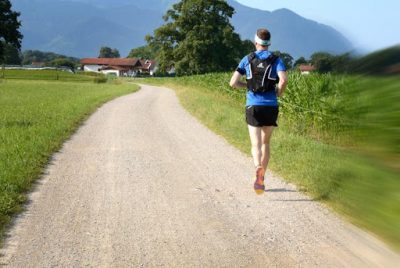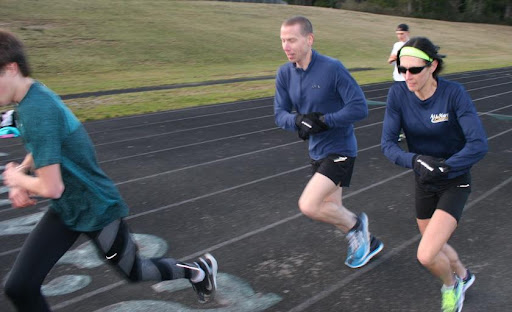Running activity is not merely a sped-up walk form of aerobic exercise. Not everyone can sustain this activity for long. If it were easy to maintain, many of us would have gone to the Olympic level.
What is the secret behind the success of a professional runner? It’s his complete awareness of the risks and safety procedures. If running activity fascinates you, this post will give you decent knowledge about it. Let’s hear what physiotherapists in Singapore have emphasised about running form and gait analysis to maximise the benefits of running.
Table of Contents
Why Running Is a Vital Physical Activity?
Running is a physical activity that gives your well-being many health benefits. It increases the chances of living longer. Your brain largely benefits from it. New brain cells grow, the focus is enhanced, anxiety, running depression, and the risk of developing neurodegenerative diseases are reduced.
Several studies showed that running reduces the risk of developing heart diseases, mental issues, sleep disorders, and cardiovascular diseases. It can also keep you away from arthritis and back problems as you age. Furthermore, it boosts your memory retention because it increases the size of the hippocampus, an area of the brain responsible for memory and learning.
The benefits of running are huge, but potential injuries could equally amount to the same. So, understand the crucial roles of running form and gait analysis.
- Gait Analysis is an evaluation that lets you know the potential problems or abnormalities in your running gait. It can take 2 to 4 hours in many instances. This procedural assessment can be performed using technology to generate vital analysis. The key factors for gathering data involve step length, stride length, cadence, cycle time, and joint angles. These components of movement create your running form.
- Running form could be done in a number of ways, but there’s no specific ideal one. Every person has a unique running form. The most popular running form is either to use your toes or heels.
Running Forms: Toes vs Heels

Many of the athletes are rear-foot runners (they run on toes). It is a form in which the balls of their feet come in contact with the ground first, followed by the heels.
Rear-footstrike is a running form that sustains the runners with strengths. It allows them to run faster, covering more distance without getting tired easily. The odd side about it is that it can lead to bouncing and potential injuries.
What about running in heels?
It is considered a poor running form but no conclusive statement yet. Researchers believe that the best footstrike is an individual’s natural running form, whether it be on toes or in heels.
Like rear-footstrike, heel strike running is associated with potential injuries. The most affected parts are the hips and knees. The foot lands ahead of your body’s centre of gravity which consumes your energy. It makes you an inefficient runner too.
Does Your Running Form Need Fix?
Many gait analysis experts and researchers do not always recommend fixing running forms. They believe that a runner has a unique running form that makes him an efficient runner. It only takes a number of exposures to improve it. The more he uses it, the better he becomes efficient at running. It’s only wearing shoes that interfere with this natural instinct.
If you seek change, it is recommended to assess your condition first. The desired change must give advantages and not risks.
- Look if there’s lacking mobility in specific joints. The muscles are not ready to support the change. In this condition, you won’t need to fix your running form.
- Check if the running gait patterns do not need changes or retraining.
- Confirm if the body is able to adjust to the change.
Alternatively, you may check on your Z angle. It is the connection of the hip and ankle as you run. All you have to do is draw lines around these areas of your body. The drawn lines must reflect a Z-shaped, implying that you have a proper running form.
- Hip joint aligned to the top of the pelvis.
- Hip down to the ankle.
- Ankle to the toes.
How To Empower Your Running Form
Following the insights of the experts, you can do alternative ways to empower your unique runner form as follows:
Follow The Three Running Principles
Pose- determines speed, endurance, and level of body pains incurred when you run. Set neutral spinal or back positioning from start to the finishing line. It creates a solid foundation for body parts coordination at an optimal level.
Fall – body against the gravity pull should be like that of a tree when falling to the ground, does not bend and hinge.
Pull – when you run, pull your foot off the ground at a minimum of 180 steps per minute or 90 steps per minute for your foot. It is where you can benefit from muscle-tendon elasticity and experience efficiency.
Use Tips and Techniques
- Shoulders must be directly above the hips and not hunched over to breathe freely.
- Arms are relaxed and bent at 90 degrees angle. No side-to-side swinging because its leads to difficulty in breathing. Rotate them at shoulder joints, not elbow joints.
- No tightening or clenching of hands because they create tension way up to the shoulders and neck.
- Look straight ahead (never look down). Keep the gaze around 10 to 20 feet ahead.
- Check if the ears are directly above the shoulders to avoid the head leaning forward. It gives tension to the neck.
- Make sure that your running will not scale up to bouncing. The landing will make the feet get tired quickly.
Conclusion
The thought of fixing a running form is tempting because of the benefits. But gait experts are correct in their insights. Every runner must recognise their natural running form and get as much exposure as possible to master it. If the fix is needed, he must be well aware of the readiness of his body to cope with the change. Otherwise, just apply helpful tips and techniques to improve his running form.



















